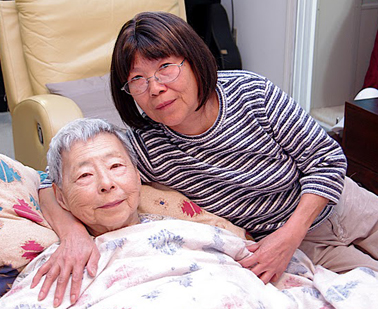
With poor working conditions and little pay, up to half of all homecare workers in Washington leave their jobs every year.
Washington’s home care providers often live paycheck to paycheck, with little in the way of work standards to protect them – so how will we attract the estimated 400,000 new workers we need to care for our Baby Boomers in their golden years?
Today, about 43,000 state-funded home care workers support vulnerable individuals by helping them with everyday tasks they can’t easily perform on their own – like dressing, bathing, eating, and taking their medication. These workers provide individual attention and care in people’s own homes, helping them stay out of more expensive (and sometimes less desirable) long-term care facilities.
But with an American turning 65 every eight seconds, Washington will need to train an estimated 400,000 new home care workers by 2030 to adequately meet demand – and it’s difficult to see that number being met. Why? Because despite all of the effort they put in, and the critical services they provide, home care workers barely scrape by. Paid a little over minimum wage, they receive no retirement benefits, no overtime pay, little sick leave or time off, and have limited access to healthcare with no coverage for dependents.
As Sheryl Wood, a home care worker from Tacoma who looks after her autistic and hearing impaired son puts it:
“I’m a worker. I’m not someone who wants to be spoon fed. All I’m asking is to be able to make an honest living.”
With one in five home care workers in poverty and relying on public assistance, there is little incentive to enter the field, much less stay in it. Up to half of all homecare workers in Washington leave their jobs every year. Each departure not only costs the state between $981 and $6,368, it also undermines the relationship between caregiver and client, reducing overall quality of care.
This isn’t a good situation for anyone: workers, the people relying on their support, or Washington. So what can be done?
Seattle is taking some initial steps to address these issue, and proposed federal legislation could also make a difference by providing some basic worker protections, like overtime pay, to home care workers. But more remains to be done.
Wages are probably the best place to start. When San Francisco increased wages for home care workers, retention rates for new workers increased by 89% and more workers entered the field. A living wage in Washington state ranges from $13 to $15/hour depending on where your live – well above the state’s current minimum wage. And according to those most familiar with the job, it will take more than a decent paycheck to make a job worthwhile, including:
- Providing paid time off to ensure home care work is physically and mentally sustainable
- Creating a retirement security plan that will ensure workers are not forced to retire into poverty
- Enhancing full time employment opportunities for home care providers
Our elders deserve the respect and care they’ve earned after a lifetime of hard work – the least Washington state can do is ensure our home care workers have the resources, support, and opportunities they need to succeed.
~by Ashwin Warrior, EOI Intern
More To Read
April 17, 2024
2023-24 Impact and Gratitude Report
Reflecting on a year of progress and transition at EOI
April 12, 2024
Welcoming our New Executive Director, Rian Watt!
EOI is excited to begin its next chapter under new leadership
April 4, 2024
Is There a Valid Argument Against Cost-Free College in Washington?
Cost-free college is a meaningful investment that would change lives. What's stopping Washington from making it happen?
